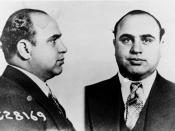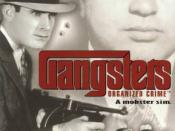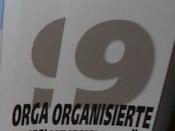Within the criminal justice field there are two different types of organizations and those organizations are called bureaucratic and patron-client organizations. Now, throughout this paper the team is going to discuss the many different reasons as to why and how the bureaucratic and patron-client organizations are different. With that being said, some of the basic differences are basically the fact that the patron-client organizations are basically referred to as the organizations that choose to break the law and on the other hand, the bureaucratic organizations are the ones that are there to enforce it. Even though there are many differences between these two organizations there are also some things that they have in common. This paper will identify so many more ways that make these two unique types of organizations different.
The Patron-Client ModelThe difference between patron-client model and bureaucratic model is that patron -client organizations are operated by an individual who is considered as the "boss."
The organization is structured as a family who has a tight bond and demonstrates trust and loyalty to each other. According to Collins 1975, "patrimonial elites are more ceremonious and personalistic" (Abadinsky, 2007). The role of the patron (boss) is to "provide economic aid and protection for the client, in return the client shows appreciation by performing necessary duties that are order by the patron. The patron controls the resources of the business and sets up all contact meetings for the client. Within the patron-client model the patron has the power to generate income by networking with other clients who are involved in criminal activities such as, drug trafficking, fraudulent activities and money laundering. A particular geographic area or industry is dominated by the patron and his organization. He also has a network of informants and connections, with the police and other officials and with those who are involved in specialized criminal operatives (Abadinsky, 2007).
The Bureaucratic ModelWhile assuming that in the world crime things are done the same and the goals are the same for all involved, but this is not the case. The bureaucratic model runs like a cooperation that has CEO's down to the line workers. In the bureaucratic model they deal with crime on a larger scale and maintain members from a selective group. Unlike the patron-client model they are not necessarily related to the members and establish close relationships. Responsibilities are usually carried out in an impersonal manner and they maintain an extensive division of labor (Abadinsky, 2007). The orders come from the top and are distributed to the next in command to enforce the orders. Everyone has his or her place in the business and are recruited based on the skill level (Abadinsky, 2007). The hierarchy is one of the main operations of the business. Each member must understand the chain of command in order to carry out the task at hand without question. Once an organization has grown to a size that requires more persons qualified to carry out the expectations the operations develops standard rules and regulations. These are essential for the structure of the organization to run smoothly and every member of the organization will know how the duties are to be carried out. In the event that a member violates the rules the organization will not simply fire them but they will eliminate the person. The organization cannot afford to have a former member expose the operation; this would create a level of venerability for the group and the chance of apprehension is emanate.
In conclusion, a patron-client network or organization is one of two contrasting organizational models; the other would be the bureaucratic/corporate model. This paper has discussed the differences between the two models.
To recap, "Patrimonial/patron-client networks characterize most American Mafia groups and the military is an example of a bureaucratic organization and a bureaucracy is the mode of organization that is essential for efficiently carrying out large-scale tasks and Patrimonial/Patron-Client Networks fear of compromised communications makes many aspects of the bureaucratic model impractical for criminal organizations" (Abadinsky, 2007).
Understanding organized crime is importatnt because it gives the government the ability to know how they work so that the governement can stop them.
ReferenceAbadinsky, H. (2007). Organized Crime. 8th ed. Balmont.Ca Thomas/Wadsworth.





